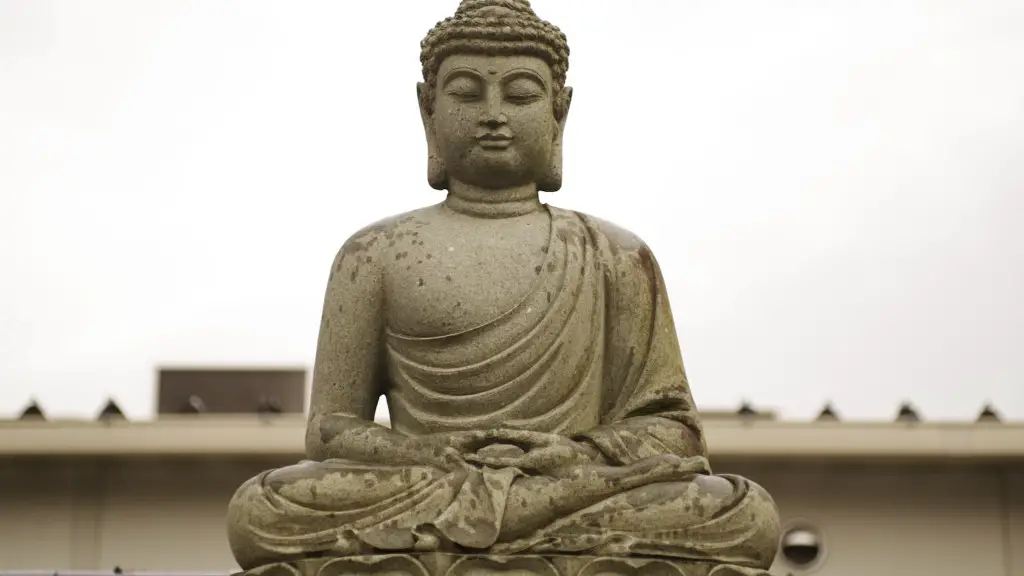What is Ashrama in Hinduism?
Ashrama is one of the four holy stages of life in Hinduism. Each stage has its own spiritual, social, and economic obligations or hierarchies associated with it. Hindus believe that each stage within the Ashrama is necessary to uphold social order and follow the dharma outlined in scriptures. This includes responsible behaviour, performing righteous duties and submitting to the will of the divine.
The term Ashrama is derived from the Sanskrit root ‘srama’ which means effort or activity. Ashrama is also known as ‘Ashramanapatava’ meaning the four steps (or paths) of life. It is believed that following these four paths in life will lead to spiritual enlightenment and is therefore a major part of Hinduism.
The four stages of Ashrama are Brahmacharya, Grihastha, Vaanaprastha and Sannyasa. The first stage is Brahmacharya, also known as student-hood which is the first stage of life. During this stage, a young adult is expected to study and become skilled in the scriptures, rishis and the Vedas. The aim here is to acquire knowledge and develop spiritually.
The second stage is Grihastha, or householder. This is the stage of life where a person is expected to become the head of a family, marry and produce children. The purpose of this stage is to fulfill their duties to their family, engage in social activities, perform their religious practices and continue to have a positive relationship with their guru.
The third stage is Vaanaprastha, or retirement from worldly life. This marks the end of the adult stage of life. During this stage, a person is expected to become more spiritually secluded, withdrawing from worldly activities. They should spend their time participating in religious activities, passing on their knowledge to the younger generation and taking a deeper dive into their religion.
The fourth and final stage is Sannyasa, also known as asceticism. This marks the end of the physical journey and is the path to liberation. During this stage, a person gives up all worldly ties and relinquishes their possessions and worldly duties. They become completely detached from worldly pleasures and devote their full time to spiritual practices. They live a solitary existence and focus solely on their devotion to their religion.
The Goals of Ashrama
The aim of following the four Ashrama stages of life is to attain spiritual enlightenment and to achieve liberation from the cycle of death and rebirth. Hindus believe that through following these stages, one is able to reach a transcendental state in which one can experience divine love. Hindus also believe that by achieving this state, one can become one with the godhead and become part of an eternal state of bliss.
Hindus also believe that by following the four stages of life, one can attain spiritual liberation from the cycle of death and rebirth. It is believed that by living a life of righteousness and spiritual devotion, one can break free from the bonds of karma and attain a state of spiritual freedom or moksha.
The four Ashramas also help to restore harmony and balance to society as they ensure that social and religious duties are performed as prescribed in the scriptures. Hindus believe that by following the Ashrama stages, one is able to lead a balanced life that is in accordance with the divine will. This helps to create a harmonious and peaceful world.
In order to maintain social order, Hindus also believe it is important to observe the four levels of Ashrama in their correct order. A person who jumps from one stage to the next without going through the necessary spiritual preparation and practice is said to be violating dharma, or the cosmic law. It is believed this can lead to spiritual suffering and disharmony in the world.
The Benefits of Ashrama
The primary benefit of following the Ashrama stages is spiritual and personal growth. Additionally, it is said to bring greater harmony to the world. Practising the four stages of life can help to bring structure and order to the lives of Hindus, while providing guidance and support on their spiritual journey. As they progress through each stage, they will have the opportunity to refine their character and spiritual path.
Hindus also believe that by following the Ashramas and living a life of righteousness, they can receive the blessings of the divine. By observing and adhering to the principles of their religion, one can attain peace, joy, grace and wisdom in their life.
Additionally, those who practice the Ashramas learn the importance of living a life of Dharma or duty. They come to understand that their duty is not only to themselves, but also to the world around them. They realize that their actions have an effect on everyone, and strive to do what is right in order to promote harmony and peace in the world.
Finally, following the four stages of Ashrama can provide a sense of purpose and direction in life. The path of Ashrama gives Hindus a way to live a life of goodness and righteousness, and to lead a life of spiritual devotion. By following this path, Hindus can achieve true inner peace and contentment.
Modern Interpretation of Ashrama
Today, Hinduism has evolved significantly compared to its ancient roots. While many Hindus still adhere to the traditional teachings of the four Ashrama stages, some have adapted their beliefs and practices to fit into a more modern context. Interestingly, the four stages have been compared to the four stages of modern life – school, work, retirement and death.
For example, the Brahmacharya stage could be seen as the stage of learning and education. Similarly, Grihastha could be interpreted as the stage of providing service to society and engaging in responsible family life. The Vaanaprastha stage could represent the period of retirement, when one moves away from worldly pursuits and into a life of spiritual devotion. Finally, the Sannyasa stage could be viewed as the fourth and final stage of death.
In this way, the four stages of Ashrama can provide a framework for living a meaningful life and pursuing spiritual liberation. While there is some variation in how Hindus interpret the Ashramas today, the fundamental principles remain the same. Hindus still strive to follow the teachings of their religion and live a life of righteousness and devotion in order to attain spiritual freedom.
Conclusion
In conclusion, Ashrama is one of the four holy stages of life in Hinduism. It is believed that by following these stages, one can attain spiritual enlightenment and liberation from the cycle of death and rebirth. The four stages of Ashrama are Brahmacharya, Grihastha, Vaanaprastha and Sannyasa. Each stage has its own spiritual, social, and economic obligations associated with it and is necessary to uphold social order. Practising the four stages of life can bring structure and order to the lives of Hindus, while providing guidance on their spiritual journey. Additionally, following the four stages can bring peace, joy, grace and wisdom to their life and help to bring greater harmony to the world.


